Africa doesn’t get a lot of global attention for its prospering economies. Instead, the focus is usually placed on the countries on the continent that are in the most dire situations. In this post, we’ll look at the richest countries in Africa and what makes their economies strong. We’ll also examine some of the wealthiest people and cities in Africa.
Below is an interactive map that highlights Africa’s richest countries in terms of GDP per capita:
Here are the top 20 richest countries in Africa by GDP per capita:
| 1 | Seychelles | $9,670 |
| 2 | Mauritius | $9,640 |
| 3 | Gabon | $8,600 |
| 4 | Equatorial Guinea | $8,070 |
| 5 | Botswana | $7,820 |
| 6 | South Africa | $5,440 |
| 7 | Namibia | $4,370 |
| 8 | Egypt | $3,830 |
| 9 | Eswatini | $3,710 |
| 10 | Tunisia | $3,680 |
| 11 | Libya | $3,620 |
| 12 | Cape Verde | $3,560 |
| 13 | Republic of the Congo | $3,510 |
| 14 | Morocco | $3,410 |
| 15 | Algeria | $3,360 |
| 16 | Djibouti | $3,210 |
| 17 | Côte d’Ivoire | $2,570 |
| 18 | Nigeria | $2,430 |
| 19 | Ghana | $2,370 |
| 20 | Mauritania | $2,180 |
1. Seychelles
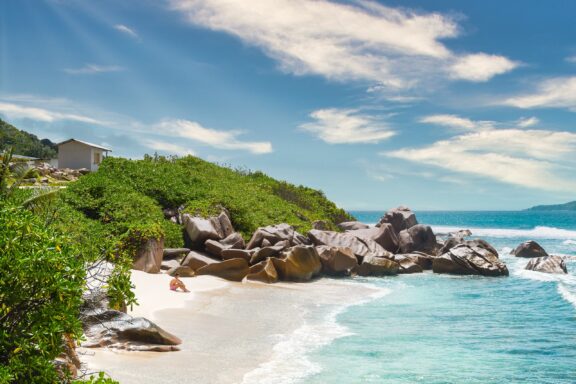
GDP per capita: $9,670
The richest country in Africa in terms of GDP per capita is Seychelles, which is an archipelago made up of 115 islands in the Indian Ocean off of Africa’s east coast. Since gaining independence from the United Kingdom in 1976, the Seychelles economy has grown dramatically.
The tourism industry is responsible for the majority of economic growth experienced in Seychelles, employing around 30% of its population. Beautiful beaches, coral reefs, and nature reserves are some of the biggest draws for tourists.
In addition to tourism, agriculture is the other main economic activity in Seychelles, with the most-exported crops being sweet potatoes, vanilla, coconuts, and cinnamon.
2. Mauritius
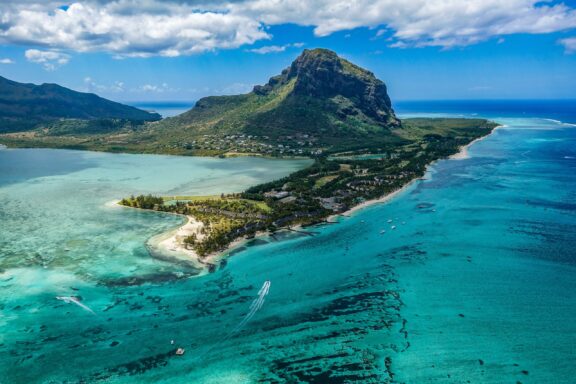
GDP per capita: $9,640
The second-richest country in Africa is another island nation in the Indian Ocean: Mauritius. There are also similarities between Seychelles and Mauritius in terms of economy. Mauritius also had a heavily agriculture-based economy in the years leading up to its independence from Britain in 1968.
Since gaining independence, Mauritius has transitioned to a diversified, high-income economy. The major economic activities in the country are currently tourism, textiles, sugar, and financial services. The island country has some spectacular beaches as well as nature parks in its interior.
Economic growth in Mauritius post-independence has been so great that it has been referred to as “the Mauritian Miracle” and the “success of Africa.”
3. Gabon
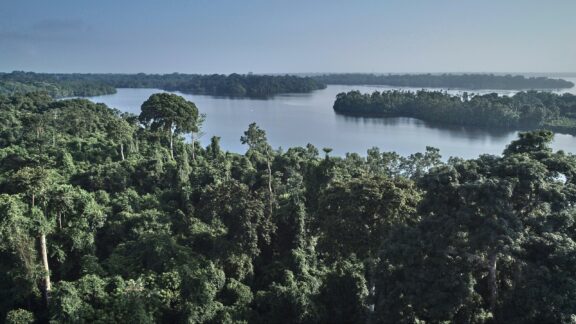
GDP per capita: $8,600
Third on the list of the richest countries in Africa is Gabon, which is located on Africa’s west coast on the equator. Gabon gained independence from France in 1960, and three presidents have served terms in the country since.
Unlike the first two countries on this list, the economy of Gabon is most heavily dependent on its oil reserves. Revenue from oil production accounts for about 43% of the country’s GDP and 81% of its exports. While this generates significant wealth for the country, there is a high degree of income disparity. The richest 20% of the population earns over 90% of the country’s total income.
4. Equatorial Guinea
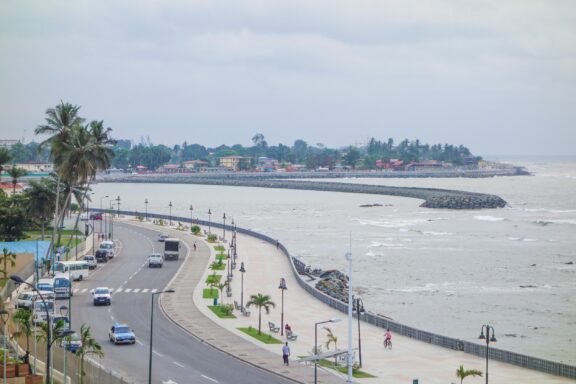
GDP per capita: $8,070
Most of Equatorial Guinea is located just north of the equator and Gabon on Africa’s west coast. There is also a small insular region that consists of islands in the Gulf of Guinea. Equatorial Guinea is unique in Africa because it is the only country on the continent that uses Spanish as an official language.
The economy of Equatorial Guinea is relatively strong, and it is mostly supported by the oil reserves discovered in the country in 1996. Agriculture is the main source of employment in Equatorial Guinea, employing about 52% of the workforce. Unfortunately, the country has one of the worst human rights reputations in the world.
5. Botswana
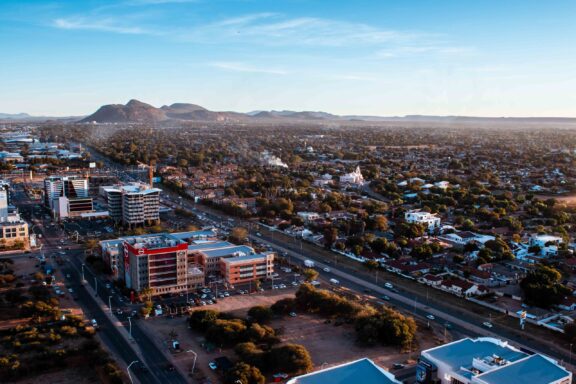
GDP per capita: $7,820
The fifth-richest country in Africa is Botswana, a landlocked nation in the southern region of the continent. The country is mostly flat, has been inhabited by humans for up to 200,000 years, and gained independence from Britain in 1966.
While Botswana is among the richest African countries today, this hasn’t always been the case. At the time of independence, it was one of the poorest countries in the world, but it has since experienced remarkable growth in GDP per capita. This growth is due to the development of an institutional framework that has allowed the country to take advantage of its abundant natural resources such as gemstones and precious metals.
6. South Africa
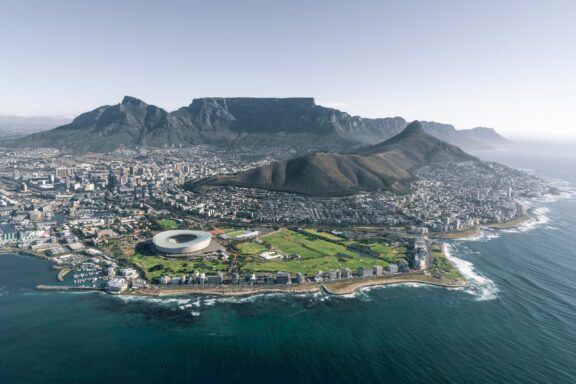
GDP per capita: $5,440
At the farthest southern tip of Africa is South Africa, the sixth-richest African nation. Some things South Africa is known for are its incredible biodiversity, gorgeous landscapes, and complicated history of racial segregation.
Some of the major economic industries in South Africa are energy, tourism, and mining. South Africa is Africa’s largest producer of electricity and the only country on the continent that has a nuclear power plant. Tourism is popular in the country because of its many national parks and impressive diversity of wildlife. Mining is a staple of the South African economy, as the country produces a large amount of gold, diamonds, and many other valuable minerals.
7. Namibia
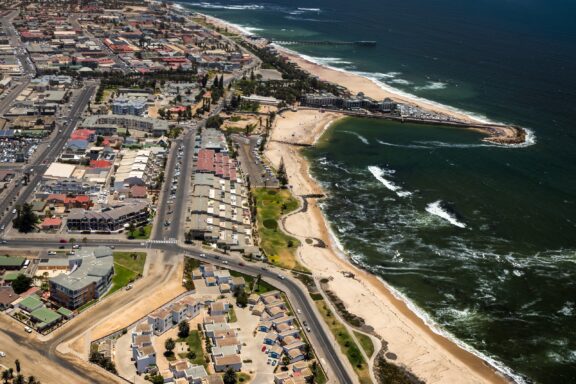
GDP per capita: $4,370
Namibia is a country in Southern Africa that borders South Africa, Botswana, Zambia, and Angola. It is the driest country in sub-Saharan Africa, and its western border traces the Atlantic Ocean. Namibia gained independence from South Africa in 1990 after many years of war in the region, and the economies of the two countries are still closely linked.
As is the case with neighboring South Africa, Namibia’s economy relies heavily on mining and tourism. Mining is the largest industry in the country, as it boasts great sources of uranium and gem-quality diamonds. Around 25% of revenue in Namibia is linked to mining activities.
Home to extensive wildlife, ecotourism accounts for upwards of 15% of employment in Namibia. Lodges and reserves accommodate trophy hunters, and extreme sports such as sandboarding and skydiving are also possible.
8. Egypt
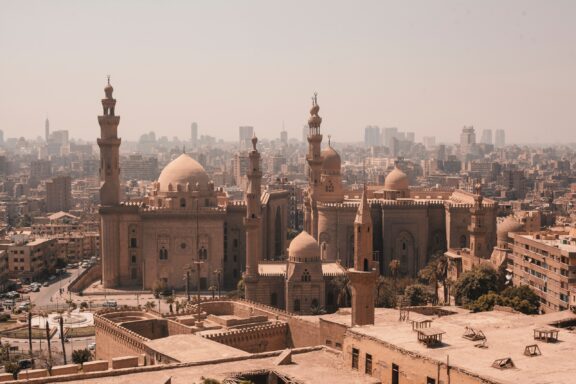
GDP per capita: $3,830
Egypt is located in Africa’s northeasternmost corner, bordering the Mediterranean Sea to the north and the Red Sea to the east. It is a transcontinental country in that its Sinai Peninsula forms a land bridge between the African and Asian continents. Egypt is the third most populous country in Africa and the eighth richest.
Some important supporters of Egypt’s economy are agriculture, media, and tourism. Despite the fact that only about 3% of the land in the country is arable, this land is productive due to its high fertility and high level of investment from the Egyptian government. Tourism in Egypt brings in billions of dollars each year with attractions such as its beaches and relics from Ancient Egypt.
9. Eswatini
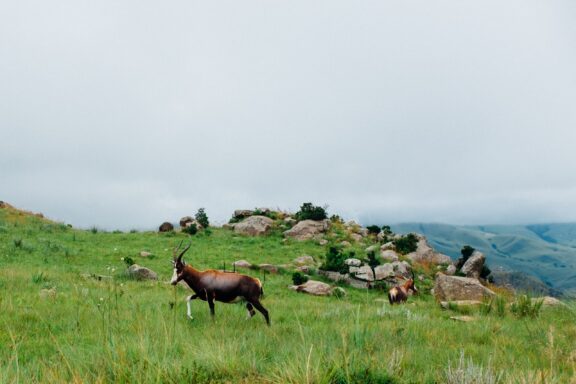
GDP per capita: $3,710
A small, landlocked country bordered by South Africa and Mozambique in Southern Africa, Eswatini is one of the smallest countries on the continent. It has been fully independent since 1968, and its name was changed to Eswatini from Swaziland in 2018.
A lower-middle-income country, Eswatini has a developing economy whose most important industries are agriculture, mining, and manufacturing. Processing of sugar-related products and textiles are the two most prominent manufacturing activities happening in the country. The vast majority of Eswatini’s trade happens with South Africa, and the European Union and the United States are some of its overseas trade partners.
10. Tunisia
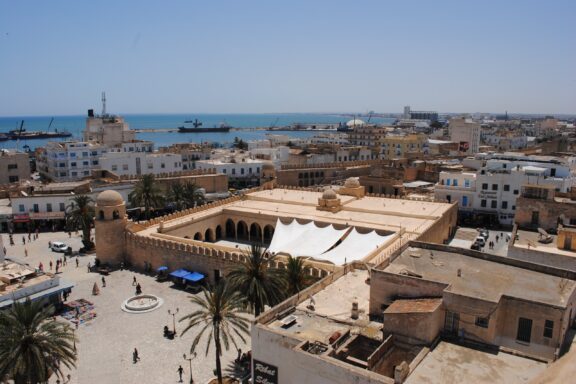
GDP per capita: $3,680
Tunisia is a country in Northern Africa on the Mediterranean Coast. It borders Algeria and Libya, and its closest non-African country is Italy. The geography of Libya is varied. It has an oceanic coastline, the eastern end of the Atlas Mountains, the northern boundary of the Sahara Desert, and a great deal of arable land.
The economy of Tunisia is mostly supported by agricultural, mining, manufacturing, and tourism activities. Tourist attractions in this country include the ancient city of Carthage, beach resorts, and its capital city of Tunis. There has been significant growth in Tunisia’s economy in recent history, but the country still suffers from a high level of unemployment.
11. Libya
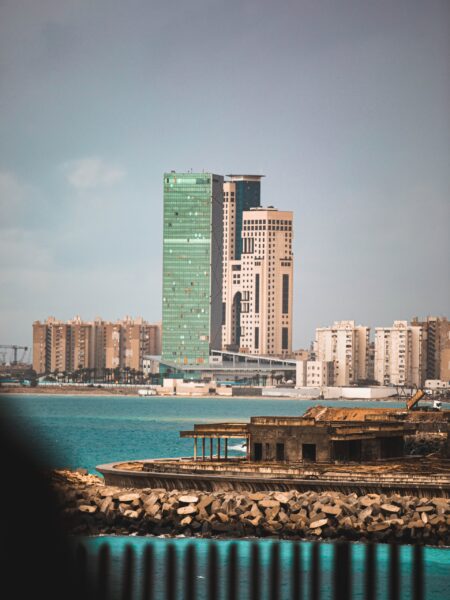
GDP per capita: $3,620
Number 11 on the list of Africa’s richest countries is Libya, which is located along the Mediterranean Coast in North Africa, sharing land borders with six other countries. It is the fourth-largest country on the continent and the 35th-most populous.
Defined by the World Bank as an upper-middle-income country, Libya’s economy is heavily dependent on its oil production. In fact, 90% of the country’s export revenue is oil-related, and more than half of its GDP is linked to the oil sector. There is a relatively high unemployment rate in Libya, and the country also has a high level of social inequality and regional economic disparities.
12. Cape Verde
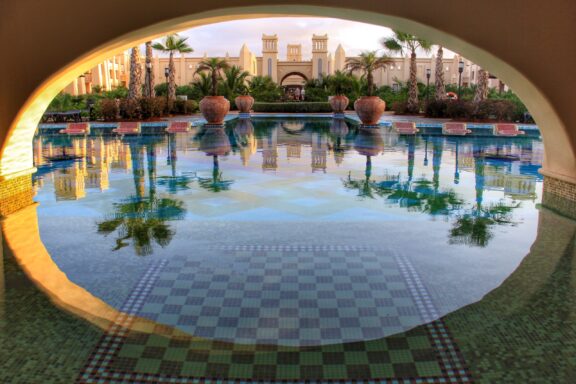
GDP per capita: $3,560
Cape Verde is an island nation made up of ten volcanic islands off the west coast of Africa in the Atlantic Ocean. Uninhabited until the 15th century, Portugal colonized the islands and prospered economically during the 16th and 17th centuries due to the Atlantic slave trade. The economy of the islands declined with the discontinuation of the Atlantic slave trade and gradually recovered by functioning as a commercial center and stopover point along shipping routes.
Cape Verde gained independence from Portugal in 1975 and has been a stable representative democracy since the beginning of the 1990s. Tourism is a growing part of the country’s economy, and commerce, transport, and public services are the most important sectors.
13. Republic of the Congo
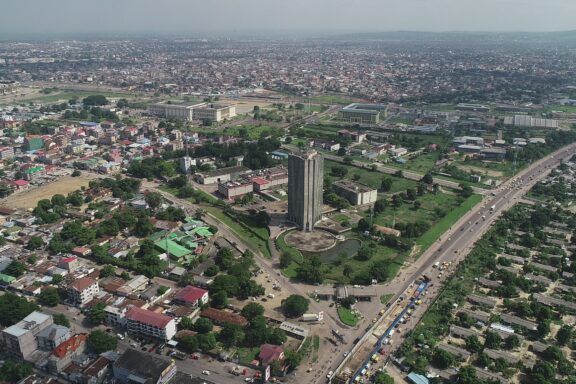
GDP per capita: $3,510
Also referred to simply as “Congo” or “the Congo,” the Republic of the Congo is a country on the western coast of Central Africa. It has a population of almost six million people, about 70% of whom live in urban areas in the southwestern portion of the country near the Atlantic Coast.
As is the case with Libya, the Congo’s economy is heavily dependent on its oil industry. It is the fourth-largest oil producer in the Gulf of Guinea, and other industries in the country’s economy include agriculture and forestry. The country also has untapped mineral wealth within its territory.
14. Morocco
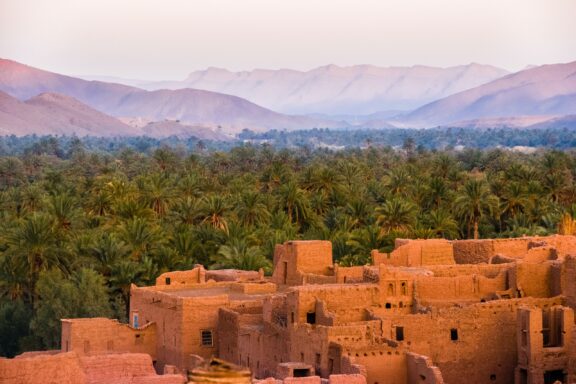
GDP per capita: $3,410
Located in the top northwestern corner of the African continent is Morocco, a country of approximately 36.7 million people. It has coastlines on the Atlantic Ocean and the Mediterranean Sea, and it borders Algeria, the disputed territory of Western Sahara, and three Spanish enclaves. It regained its independence from France and Spain in 1956.
Overall, Moroccans experience a relatively high quality of life, and the country has Africa’s fifth-strongest GDP when considered in terms of purchasing power parity (PPP). Centered around the Moroccan coast, culture, and history, tourism is a major industry in the Moroccan economy. Agriculture also plays a vital role, employing around 40% of the country’s population.
15. Algeria
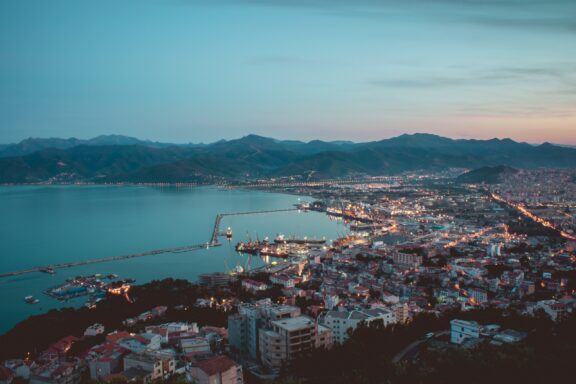
GDP per capita: $3,360
Algeria is a large country in Northwest Africa that borders the Mediterranean Sea and is surrounded by six other countries and the disputed territory of Western Sahara. It is the largest country on the continent and the ninth-most populous with a population of around 44 million.
Of all mainland African countries, Algeria scores the highest on the Human Development Index. Energy exports are the primary activities funding the country’s economy. It has the ninth-largest natural gas reserves in the world and vast oil reserves. Other sectors in the Algerian economy are alternative energy resources and tourism, though the tourism industry is still developing.
16. Djibouti
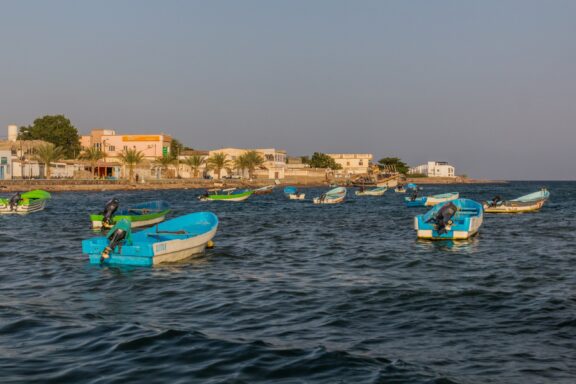
GDP per capita: $3,210
The sixteenth-richest country in Africa is Djibouti, a small country located in the Horn of Africa. It borders Somalia, Eritrea, and Ethiopia as well as the Red Sea and the Gulf of Aden. Djibouti has the smallest population of any non-island African country and French and Arabic are the official languages spoken in the country.
The service sector is the largest part of Djibouti’s economy, and this is in part because of its location along a major shipping route. Almost 80% of the country’s GDP comes from the service sector, and industry is the next largest sector. Only around 3% of Djibouti’s GDP comes from agriculture, and the country imports much of its food due to limited rainfall.
17. Côte d’Ivoire
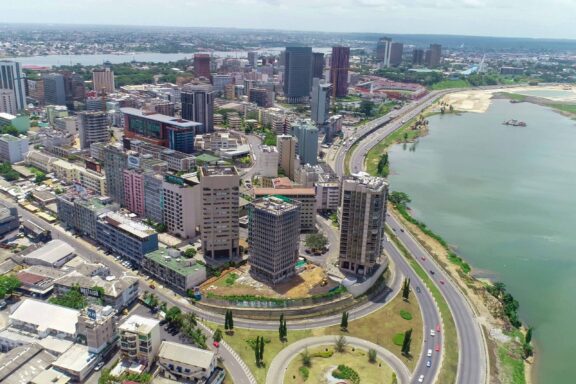
GDP per capita: $2,570
Known as “Ivory Coast” in English, this country has a GDP per capita of just over $2,500. It borders five other African countries and has a coastline on the Gulf of Guinea. The country’s official language is French, but many indigenous languages are also spoken.
Côte d’Ivoire gained independence from France in 1960, at which time it experienced great economic success with the production of coffee and cocoa. The country then went through a period of economic decline, rebounding over the past decade. Côte d’Ivoire had the second-highest economic growth in Africa from 2012-2021. Its economy is still predominantly based on agriculture.
18. Nigeria
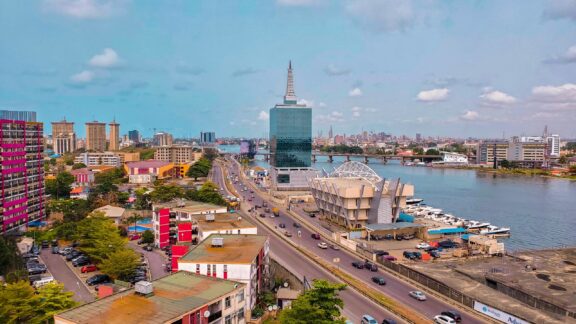
GDP per capita: $2,430
With a population of more than 225 million, Nigeria is the most populous country in Africa and the sixth-most populous in the world. The largest city in Nigeria is Lagos, which is one of the largest metropolitan areas in the world, but its capital is Abuja.
Nigeria has the largest economy in Africa, but its massive population brings its GDP per capita down to the 18th-largest on the continent. Much of the country’s economy is supported by revenue from its large oil and gas reserves. There is also a large number of underexploited mineral resources in the country, and its financial, legal, and transport sectors are well developed.
19. Ghana
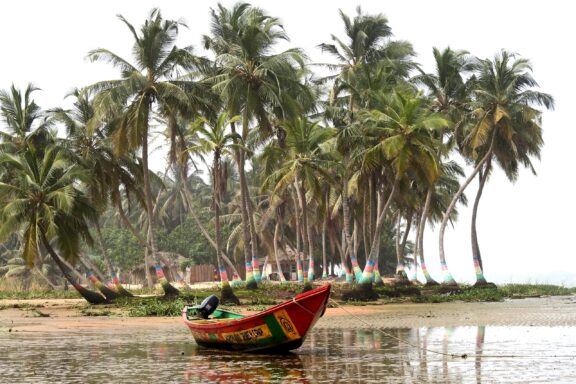
GDP per capita: $2,370
Ghana is another country on the Gulf of Guinea in Western Africa. Its capital and largest city is Accra, which is located on the country’s coast. Its other large cities are spread throughout the country’s diverse geography. Ghana is also home to Lake Volta, the largest manmade reservoir by surface area in the world.
The largest export in Ghana is gold, followed by crude petroleum and cocoa beans. Digital financial services are a growing sector in the country’s economy. Urban areas in Ghana offer better economic opportunities for its citizens and levels of unemployment are much lower in urban areas.
20. Mauritania
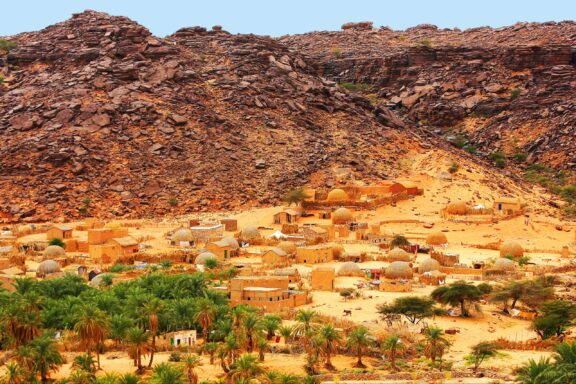
GDP per capita: $2,180
Mauritania is a country in Northwest Africa, and it is the 20th-richest country on the continent in terms of GDP per capita. Culturally and politically, Mauritania is part of the Arab world. The official language in the country in Arabic, and the official religion is Islam.
The economy of Mauritania isn’t that strong, and the majority of its population depends on agriculture and livestock to make a living. Iron ore deposits account for roughly half of the country’s exports, and gold and copper mining activities also contribute.
Private Wealth in Africa
Africa has the highest rate of wealth inequality of any continent in the world. This means that a vastly disproportionate amount of wealth is concentrated in specific locations throughout the country and with various high-net-worth individuals. In this section, we’ll look at some of the richest places and people in Africa.
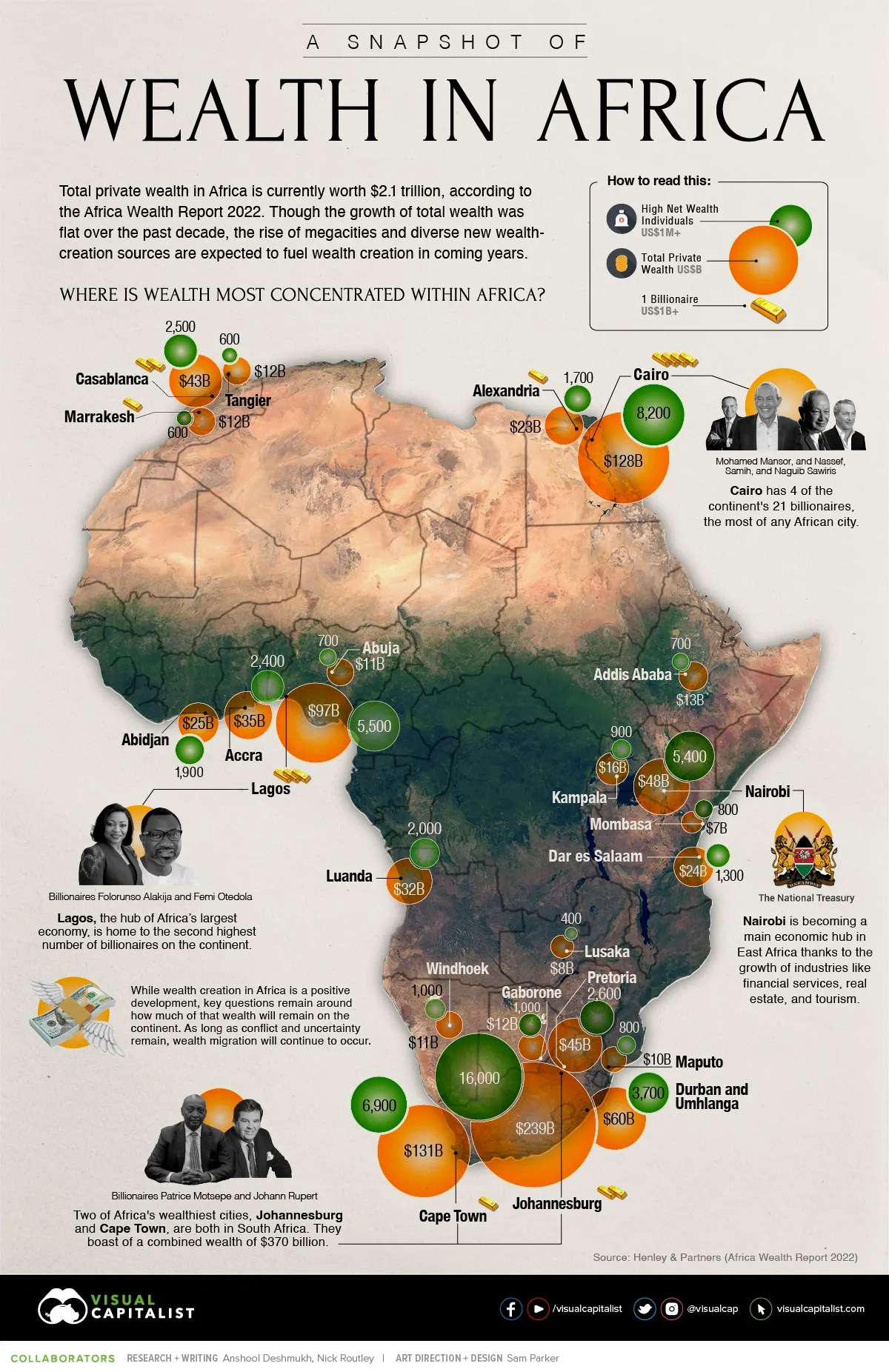
Johannesburg and Cape Town
Both of these South African cities are among Africa’s wealthiest. Cape Town is located on the country’s southern coast and is also the legislative capital of the nation. Johannesburg is located inland and is the country’s largest city. Combined, the two cities have an incredible wealth of $370 billion.
Cape Town’s economy is based largely on manufacturing, tourism, and financial and business services. There are also approximately 6,900 high-net-worth individuals with assets of $1 million or more in the city.
Johannesburg is known for being the financial and economic hub of South Africa, so it’s no surprise that the city is home to 16,000 high-net-worth individuals and $239 billion. Johannesburg produces about 16% of the country’s GDP.
Billionaires in Africa
There are 18 billionaires in Africa as of 2022. They are spread out over seven different countries, though there are five living in Egypt and South Africa, making the two countries tie for most billionaire residents. The city with the most billionaires is Cairo, Egypt, where there are four. The country with the second-highest number of billionaires is Nigeria, where Lagos is home to three. There are two billionaires in Morocco.
Combined, the wealth of billionaires in Africa is equal to some $84.9 billion. This number changes quite regularly, but it is the highest amount since 2015 and has increased by a significant margin from one year ago.
The Richest Man in Africa
The richest man in Africa is currently Aliko Dangote. Dangote is worth approximately $13.9 billion in 2022. He is the founder and chairman of Dangote Cement, the largest cement producer in Africa, owning 85% of the company. Other projects by Dangote include the Dangote Fertilizer plant which was commissioned by Nigerian President Muhammadu Buhari and the Dangote Refinery, which will be the largest single-train refinery in the world when completed.
Cairo Billionaires
Although Cairo trails behind Cape Town and Johannesburg to make it the third-wealthiest city in Africa, it is home to the continent’s highest concentration of billionaires. To make things even more interesting, three of Cairo’s four billionaires are related. The three Sawaris brothers, sons of Onsi Sawaris, are all Egyptian billionaires. Onsi Sawaris founded Orascom in 1950, which has grown into a conglomerate of companies that are now run by his sons.
Another Cairo-based billionaire is Mohamed Manour, whose wealth comes from the automotive industry and investments. His family’s company Monsour Group is one of the most powerful conglomerates in Egypt.